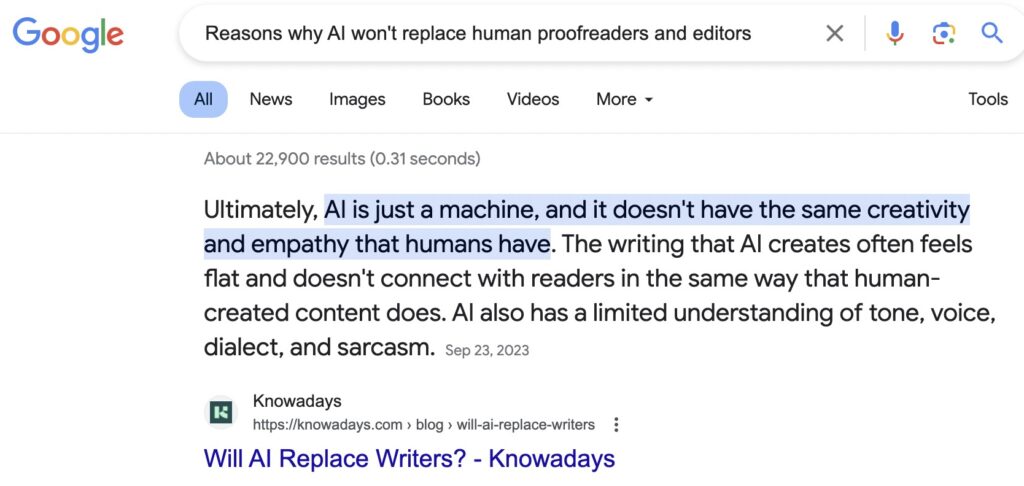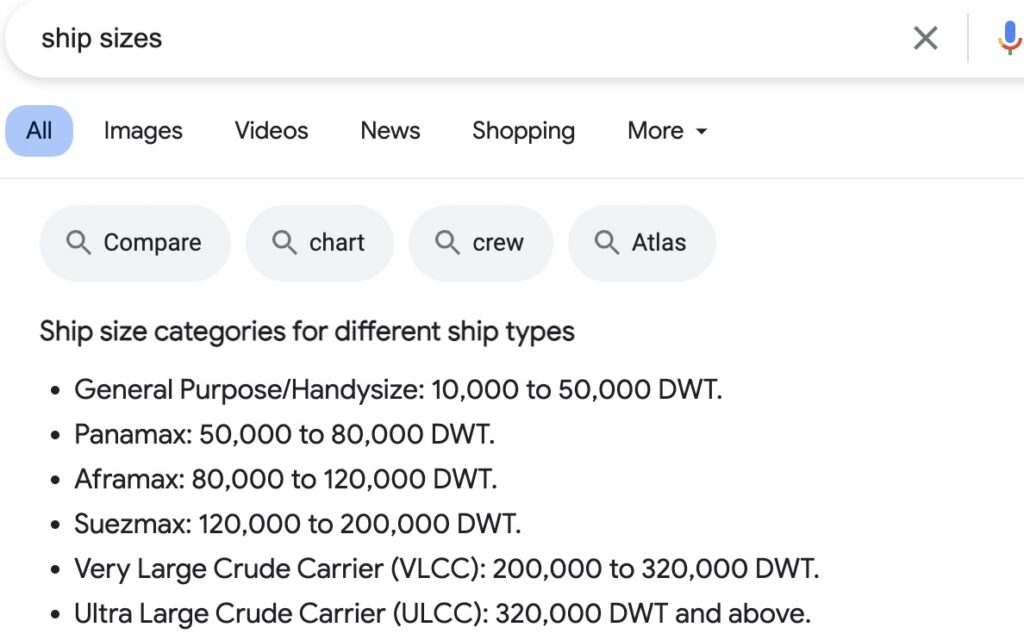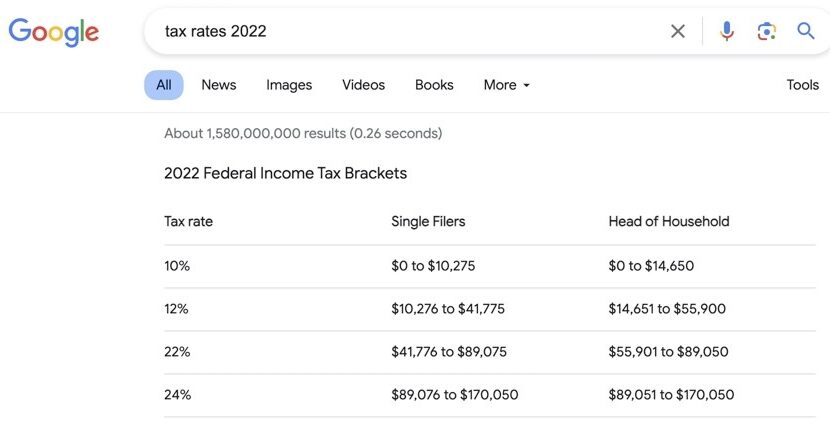
What Are Featured Snippets? (And How to Get Them)
For freelance writers, securing the top spot in Google’s search results – also known as position zero or the featured snippet – is one of the best ways to get results for your clients. According to one study on Google click-through rates, featured snippets get about 35% of all total clicks for a given search query.
But what exactly is a featured snippet, and how can you increase your chance of getting one? Don’t worry; we’ve got the answers! In this post, we’ll cover everything you need to know about featured snippets. We’ll explore the different types of featured snippets and how to optimize your content for them.
Keep reading to get started.
What Is a Featured Snippet?
Featured snippets are a few lines of content that appear at the top of Google’s organic search results page. They are extracted directly from relevant website content to provide brief but informative answers to user search queries. Essentially, they can provide users with quick, relevant answers to their questions without requiring them to click through multiple websites to find the information they want.
Featured snippets are different from meta descriptions, which are HTML attributes that provide a summary of a webpage’s content and appear below the title tag in search engine result pages. It’s important to note that, while meta descriptions are written by writers, it’s the Google algorithm that selects featured snippets from pieces of content. However, there are steps you as a writer or editor can take to increase the chance that your content will be selected as a snippet (which we’ll address below).
Why Do Featured Snippets Matter?
Achieving a Google-featured snippet has significant benefits for both content writers and their clients.
For writers, securing the number-one spot and a featured snippet is a meaningful achievement. It increases the visibility of their content and leads to increased organic website traffic. It also signals to users that the website is credible since Google selects featured snippets based on the content’s relevance and quality. This means that landing a featured snippet can only enhance your reputation as an authoritative source (and thereby get you more clients).
For clients, such as the owners of featured websites or blogs, securing a featured snippet can boost their website traffic and increase engagement and sales. Snippets occupy prime real estate on results pages, which gives businesses a competitive advantage over other websites competing for the same search queries.
Types of Featured Snippets
There are several different types of featured snippets.
1. Paragraph
These snippets provide a brief paragraph (usually around three lines) that directly answers a user’s query. This copy is often extracted from a web page’s content. Here’s an example of such a featured snippet as a response to the search query “reasons why AI won’t replace human proofreaders and editors”:

2. Definition Boxes
This type of featured snippet gives a quick summary definition (around 40 words) to a query that begins with “What is…” It typically begins with the keyword or phrase included in the search query. The example below shows a response to the question, “What is Wi-Fi?”:

3. Ordered List
Ordered list snippets provide a concise list of a sequence of ordered steps, typically in response to a “how to” search query. Here’s an example of a featured snippet for the search query “how to make coffee” in an ordered list format:

4. Bulleted or Numbered List
List snippets present information in a bulleted or numbered list format. They provide a breakdown of items or tips related to the user’s query. Here’s an example of a featured snippet in a bullet list in response to the search query “ship sizes.” The snippet displays the range of sizes for a variety of different ship types in an easy-to-comprehend format:

5. Table
This type of snippet displays data in a table format sourced from tables on relevant web pages. It is commonly used to display comparisons, specifications, or other structured data. Here’s an example of the featured snippet for the search query “tax rates 2022” displayed in a table format:

How to Optimize for Featured Snippets
How can you increase your chances of securing a valuable featured snippet spot? Below are some steps you can take to optimize your content.
1. Match the Existing Snippet Format
Search for common queries related to your topic and look at the featured snippet. Is it in paragraph, list, or table format? Match the relevant portions of your content to the existing featured snippet format to increase your chances of getting selected. If there is no current featured snippet, format your content in a way that’s compatible with common featured snippets. For instance, lists, tables, and concise paragraphs.
2. Use Targeted Keywords
Long-tail keywords often trigger featured snippets, as they generally represent specific questions or queries that can be answered succinctly. Research and target long-tail keywords related to your topic to boost SEO and increase your chances of being featured in snippets.
3. Use a Clear Hierarchical Heading Structure
Structure your content in a way that is easy for search engines to understand. Use a heading structure (H1, H2, H3, etc.) to break up your content into logical sections and include clear, concise coverage of a given issue in the section directly following the main headings and subheadings.
4. Create Valuable Content
Comprehensive, high-quality content that thoroughly addresses users’ queries and provides valuable information is more likely to rank higher on Google. Also, content that covers a topic in-depth and addresses multiple aspects of a query is more likely to be featured in snippets. While you can’t guarantee your content will be featured in a snippet, it’s much more likely to be selected if it’s unique and particularly beneficial to the reader.
Becoming A Freelance Writer
Do you want to learn more about what goes into a successful freelance writing career? Take our comprehensive Becoming A Freelance Writer course, which has an entire module dedicated to SEO in content writing. Sign up for your free lessons to get started today!





Your email address will not be published.